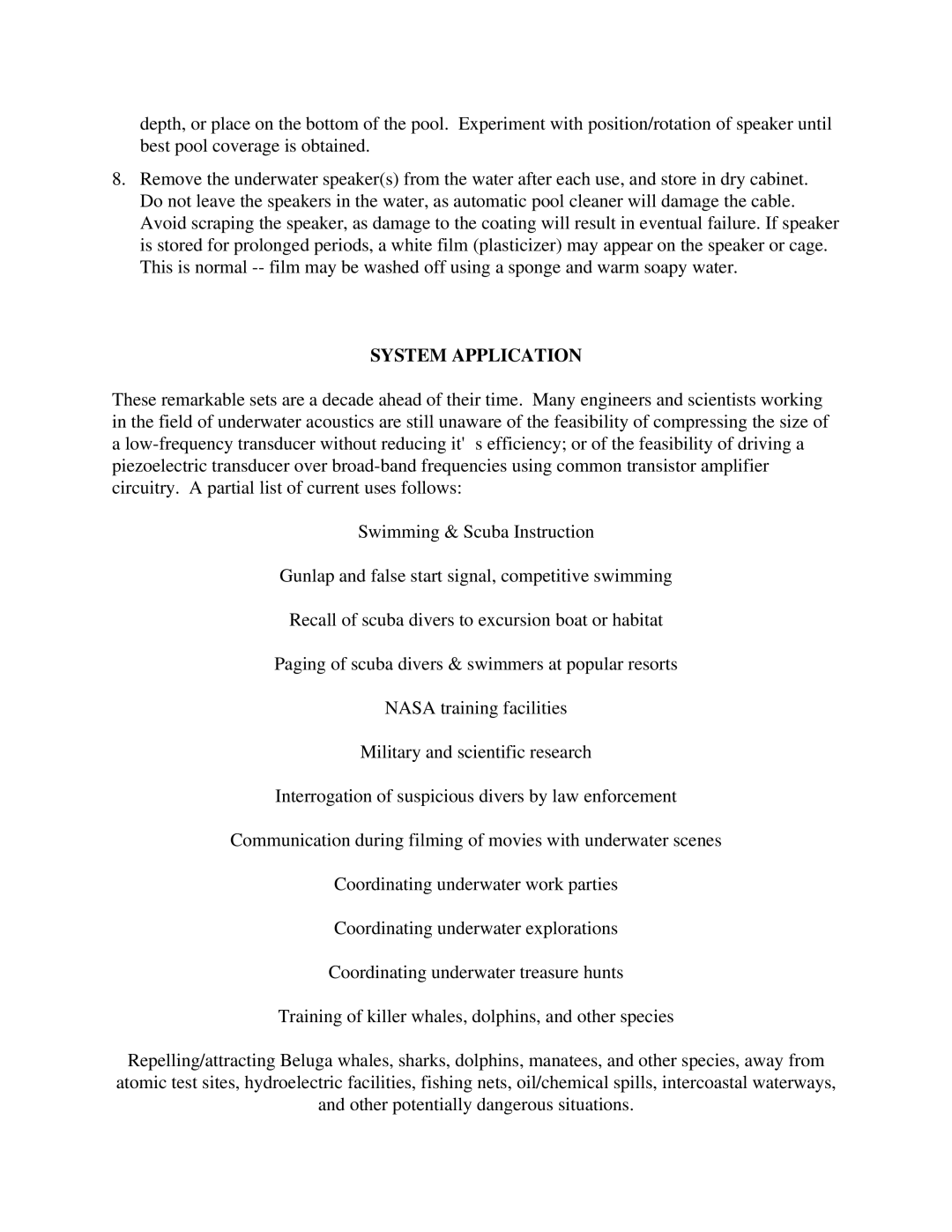depth, or place on the bottom of the pool. Experiment with position/rotation of speaker until best pool coverage is obtained.
8.Remove the underwater speaker(s) from the water after each use, and store in dry cabinet. Do not leave the speakers in the water, as automatic pool cleaner will damage the cable. Avoid scraping the speaker, as damage to the coating will result in eventual failure. If speaker is stored for prolonged periods, a white film (plasticizer) may appear on the speaker or cage. This is normal
SYSTEM APPLICATION
These remarkable sets are a decade ahead of their time. Many engineers and scientists working in the field of underwater acoustics are still unaware of the feasibility of compressing the size of a
Swimming & Scuba Instruction
Gunlap and false start signal, competitive swimming
Recall of scuba divers to excursion boat or habitat
Paging of scuba divers & swimmers at popular resorts
NASA training facilities
Military and scientific research
Interrogation of suspicious divers by law enforcement
Communication during filming of movies with underwater scenes
Coordinating underwater work parties
Coordinating underwater explorations
Coordinating underwater treasure hunts
Training of killer whales, dolphins, and other species
Repelling/attracting Beluga whales, sharks, dolphins, manatees, and other species, away from atomic test sites, hydroelectric facilities, fishing nets, oil/chemical spills, intercoastal waterways, and other potentially dangerous situations.
